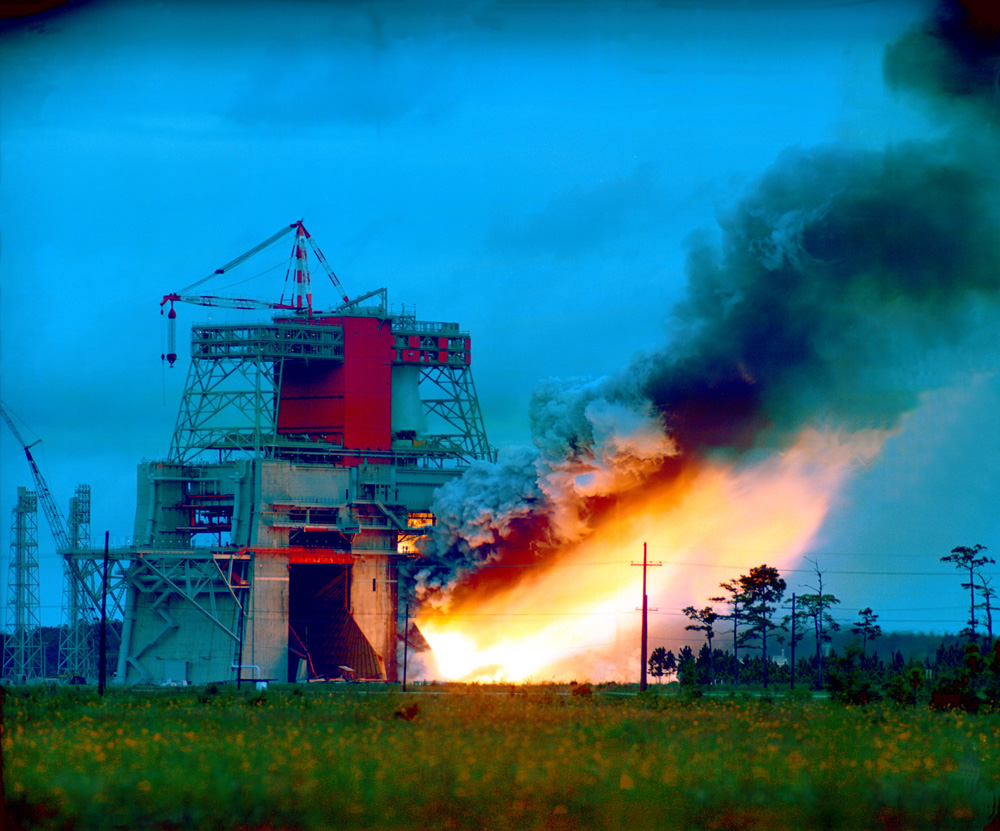Space History Photo: Huge Saturn V Rocket Stage Test Fired

Off goes a moon rocket! Well, actually, not quite. In this historical photo from the U.S. space agency, smoke and flames belch from the huge S-1C test stand as the first stage booster of the Apollo/Saturn V space vehicle is static fired on Jan. 1, 1967, at the NASA Mississippi Test Facility (MTF), later named the Stennis Space Center. There was no liftoff in this test.
The huge Saturn V rocket — a Heavy Lift Vehicle — had five engines that develop 7.5 million pounds of thrust. The full 363-foot-long Saturn V (standing as tall as a 36-story building) could launch up to a height of 40 miles at a speed of 6,000 mph. (The “V” is for the Roman numeral 5.) The Saturn V was the most powerful rocket ever flown, and it was used to get Apollo moon missions off the ground.
The first stage was built for NASA by the Boeing Company at NASA's Michoud Assembly Facility in New Orleans, Louisiana, under the management of Marshall Space Flight Center.
Each weekday, SPACE.com looks back at the history of spaceflight through photos (archive).
Get the Space.com Newsletter
Breaking space news, the latest updates on rocket launches, skywatching events and more!
Join our Space Forums to keep talking space on the latest missions, night sky and more! And if you have a news tip, correction or comment, let us know at: community@space.com.

The National Aeronautics and Space Administration (NASA) is the U.S. government agency in charge of the civilian space program as well as aeronautics and aerospace research. Founded in 1958, NASA is a civilian space agency aimed at exploring the universe with space telescopes, satellites, robotic spacecraft, astronauts and more. The space agency has 10 major centers based across the U.S. and launches robotic and crewed missions from the Kennedy Space Center in Cape Canaveral Florida. It's astronaut corps is based at the Johnson Space Center in Houston. To follow NASA's latest mission, follow the space agency on Twitter or any other social channel, of visit: nasa.gov.









